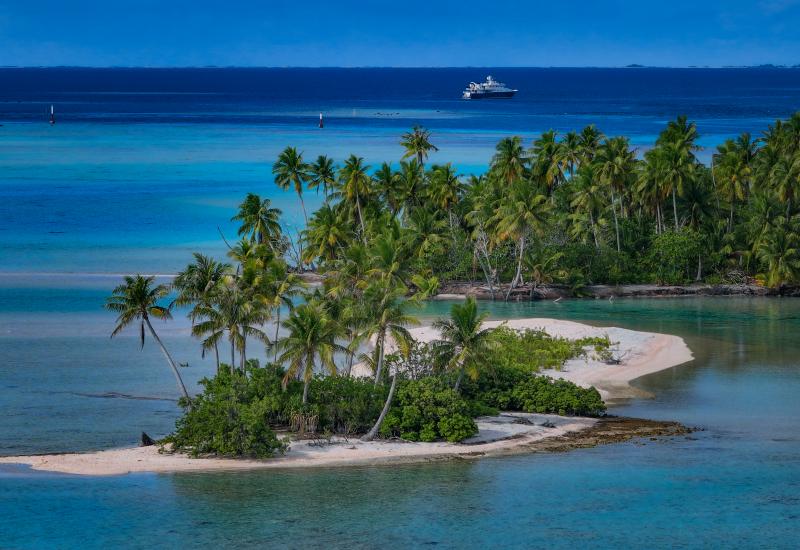The Wild Side of Andros

Courtesy of the Bahamas Ministry of TourismThe largest island in The Bahamas, Andros remains virtually untouched.
Andros Island, stretching 104 miles, is home to the third largest barrier reef in the world. It’s known equally for its inland and oceanic blue holes as it is for its perch at the edge of the Tongue of the Ocean, a deep-water Atlantic trench that ushers in leagues of big animals that call the depths home.
“We are the only place in the world with tidal, freshwater blue holes—and we have more than 100 off South Andros,” says Jesse Leopold, owner of Andros Beach Club Resort, an all-inclusive boutique resort with just eight beachside cabanas. “They’re basically underwater caverns.” Most start amid shallow coral reefs and plummet to some 300 to 400 feet. “Once you enter, you see lobsters and crabs all over the walls,” says Leopold. Venture further inside to find unique formations. Because the blue holes are tidal, the experience changes depending on time of day. With four different tidal changes each day, the interior can be entirely different in terms of lighting, depth and atmosphere. Plus, the water inside is freshwater; that’s at least 10 degrees cooler than the surface temperature. That water helps cool the ocean water, protecting the corals. The island also has a collection of inland blue holes, much like Mexico’s cenotes. The difference is that Andros’ inland blue holes run vertically as opposed to horizontally.
Another main attraction is the barrier reef system, hailed as the world’s third largest. “No other island has anything close to the barrier reef we have here,” says Leopold. “It’s so big that much of it is still unexplored.” Beyond spanning for miles, the reefs here are healthier than those of other destinations. This island has very little development, allowing the corals to stay free from golf-course run-off, explosion fishing and any of the other myriad stressors. “What you see underwater is exactly as Mother Nature made it,” says Jeffrey Birch, manager of Small Hope Bay Lodge.
A favourite site of Leopold’s is The Labyrinth, with a warren of swim-throughs winding through the reef. Sharks, turtles and stingrays are all likely sightings. Then there are the sharks. On most dives, you’ll likely encounter at least one Caribbean reef shark.
The team at Small Hope Bay Lodge, a family-owned eco-resort that offers diving, conducts a shark dive wherein a frozen chumsicle is lowered into the water. However, unlike other shark dives in The Bahamas, the one off Andros is not a live feed—there is no handler in the water handing fish to any sharks—which means that divers are free to swim about. “We run it just as we do any other dive,” says Birch. “The bonus of this kind of dive is that you can enjoy looking at the sharks from many different angles.” Plus, it’s the chance to learn more about their behaviour. The pectoral fins, for example, signal the arousal state of the shark. When the fins point directly out from their torsos, the shark is in a natural, relaxed state. It’s the chance, too, to swim in close enough to watch the nictitating membrane flick closed over the shark’s eye as it veers in to bite from the chumsicle.
Most divers will want to experience the sharks and these three geographic phenomena, and while you might be able to see them all in one day—a very long day—most travellers opt to spend a full week on this eco-paradise island, basing themselves at either Small Hope Bay Lodge or the Andros Beach Club Resort, allowing plenty of time to enjoy the white sand beaches, deep-sea and fly fishing, hiking and everything else that makes Andros so unforgettable.










